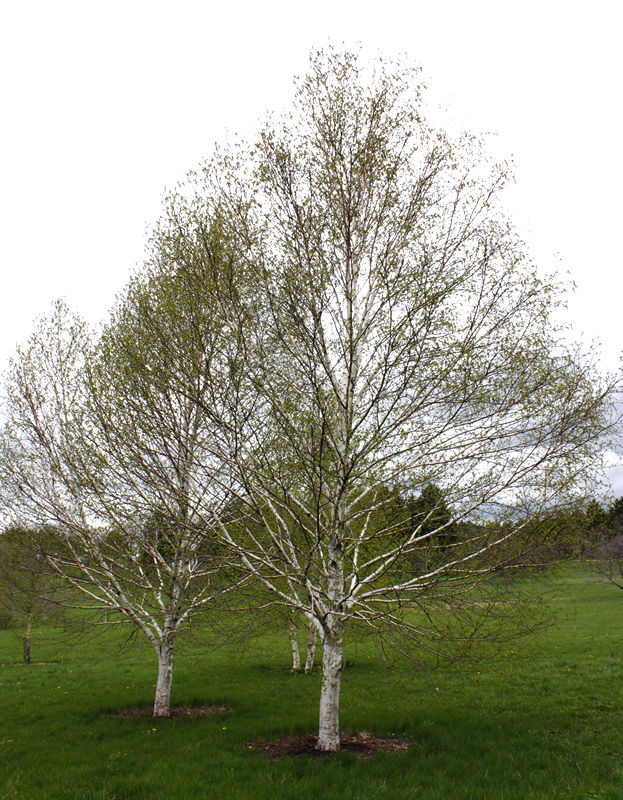 |
White Satin Birch – Betula 'White Satin' Family Betulaceae – Alder, Birch, Hornbeam White Satin birch is a product of Chicagoland Grows. Characteristics include good borer resistance |
Custom Search
|
| Dr. Edward R. Hasselkus selected this tree from the collections at Longenecker Horticultural Gardens of the University of Wisconsin, Madison. Its attractive characteristics include good borer resistance, a uniform upright pyramidal habit, beautiful satin-white bark, attractive foliage, and golden-yellow fall color. The parent plant originated from seed distributed by the USDA, North Central Plant Introduction Station in Ames, Iowa, under P.I. #130480. Planted in the mid-1970s, it out-survived all the other seedlings from the population, which were lost to bronze birch borers. The parent tree measures approximately 40' in height with a 30' spread at the base. Zones 5-7. [1] |
Animals dependant on Birch
Birds:
|

|
Separate male and female flowers are borne on the same tree; the male in the form of a catkin, and the female in cone-like clusters that fall from the tree and are blown for long distances by the wind. In the fall, the foliage turns pale yellow.
The graceful elegance of the birch allows it to be used as a specimen or for naturalizing, and is best used in large areas. It transplants easily and is most effective when planted in groupings. A multi-trunk specimen is more handsome than single-trunk trees. It should not be planted in high-use areas such as driveways, walks and patios, as dead branches tend to be messy. Periodic pruning is required to remove these branches; this can be done at any time of year. Although the river birch thrives in wet areas, it does not require excessive amounts of water. It tolerates fairly dry soils once it is established, but will not live as long. It requires acidic soils, suffering from iron deficiency if pH levels are 6.5 or higher. |
References
|
| Tree Encyclopedia / North American Insects & Spiders is dedicated to providing scientific and educational resources for our users through use of large images and macro photographs of flora and fauna. |

|
Family Betulaceae – Alder, Birch, Hornbeam |
